SEBS-Polymer-Modified Slag–Cement–Bentonite for Resilient Slurry Walls
Abstract
:1. Introduction
2. Materials and Methods
2.1. SEBS Polymer
2.2. Slag–Cement–Bentonite
2.3. Experimental Methods
3. Results and Discussion
3.1. Sorption Capacities and Microstructure of SEBS
3.2. Rheological Properties of SEBS-Modified Slurry
3.3. Mechanical Properties of SEBS-Modified Slag–Cement–Bentonite
3.4. Self-Healing Performance
3.5. Microstructural Analysis
3.5.1. SEM-EDX Results
3.5.2. 3D micro-CT Results
4. Conclusions
- The absence of new peaks or frequency shifts in the FTIR spectrum indicated that the sorption process exhibited absorption (not adsorption). The SEBS polymer has a high absorption capacity at 9.8–12.4 g/g including liquid paraffin and mineral oil.
- Although the viscosity showed a linear increase with increasing SEBS content, the viscosity values of SEBS-modified slurry were less than the suggested maximum values.
- The increase in SEBS dosage resulted in reduced UCS and increased strain at failure, suggesting that the increased ductility is due to the addition of the deformable polymer. The increased ductility is beneficial as the slurry wall could deform to a greater extent without cracking.
- After the permeation of liquid paraffin, the SEBS on the crack surface swelled and sealed the crack, with the post-healing hydraulic conductivity only slightly higher than the undamaged values, which exhibits good self-healing performance.
- SEM-EDX and micro-CT scan analyses revealed strong bonding and homogeneous distribution of SEBS in the slurry. SEBS acted as a binder to protect the sample from disintegration, and the swollen SEBS particles sealed most cracks.
Author Contributions
Funding
Institutional Review Board Statement
Informed Consent Statement
Data Availability Statement
Conflicts of Interest
References
- Jefferis, S.A. The origins of the slurry trench cut-off and a review of cement-bentonite cut-off walls in the U.K. In Proceedings of the International Containment Technology Conference and Exhibition, St. Petersburg, FL, USA, 9–12 February 1997; pp. 52–70. [Google Scholar]
- Hodge, V.; Robinson, T.; Spooner, P.; Wetzel, R.; Spooner, C.; Furman, C.; Tokarski, E.; Hunt, G. Slurry Trench Construction for Pollution Migration Control; U.S. Department of Energy Office of Scientific and Technical Information: Oak Ridge, TN, USA, 1985.
- Garvin, S.L.; Hayles, C.S. The chemical compatibility of cement–bentonite cut-off wall material. Constr. Build. Mater. 1999, 13, 329–341. [Google Scholar] [CrossRef]
- Jefferis, S. Cement-Bentonite Slurry Systems. In Grouting and Deep Mixing 2012, Proceedings of the Fourth International Conference on Grouting and Deep Mixing, New Orleans, LA, USA, 15–18 February 2012; ASCE: Reston, VA, USA, 2012; pp. 1–24. [Google Scholar]
- Alzayani, N.J.; Royal, A.C.D.; Ghataora, G.S.; Jefferson, I. Cement-bentonite in comparison with other cemented materials. Environ. Geotech. 2017, 4, 353–372. [Google Scholar] [CrossRef] [Green Version]
- Joshi, K.; Kechavarzi, C.; Sutherland, K.; Ng, M.Y.A.; Soga, K.; Tedd, P. Laboratory and In Situ Tests for Long-Term Hydraulic Conductivity of a Cement-Bentonite Cutoff Wall. J. Geotech. Geoenviron. Eng. 2010, 136, 562–572. [Google Scholar] [CrossRef]
- Royal, A.C.D.; Opukumo, A.W.; Qadr, C.S.; Perkins, L.M.; Walenna, M.A. Deformation and Compression Behaviour of a Cement–Bentonite Slurry for Groundwater Control Applications. Geotech. Geol. Eng. 2018, 36, 835–853. [Google Scholar] [CrossRef] [Green Version]
- Opdyke, S.M.; Evans, J.C. Slag-Cement-Bentonite Slurry Walls. J. Geotech. Geoenviron. Eng. 2005, 131, 673–681. [Google Scholar] [CrossRef]
- Cermak, J.; Evans, J.; Tamaro, G.J. Evaluation of Soil-Cement-Bentonite Wall Performance—Effects of Backfill Shrinkage. In Grouting and Deep Mixing 2012, Proceedings of the Fourth International Conference on Grouting and Deep Mixing, New Orleans, LA, USA, 15–18 February 2012; ASCE: Reston, VA, USA, 2012; pp. 502–511. [Google Scholar]
- Nejad, B.G.; Osborne, T.; Carter, J.P. Forensic Investigation of a Slurry Wall Failure: A Case Study. In Grouting 2017, Proceedings of the Fifth International Conference on Grouting, Honolulu, HI, USA, 9–12 July 2017; ASCE: Reston, VA, USA, 2017; pp. 513–522. [Google Scholar]
- Cao, B.; Chen, J.; Al-Tabbaa, A. Crack-resistant cement–bentonite cut-off wall materials incorporating superabsorbent polymers. Can. Geotech. J. 2021, 58, 800–810. [Google Scholar] [CrossRef]
- Alzayani, N.J. Impact of Undrained Deformation on the Hydraulic Conductivity of Cement-Bentonite Barrier Material. Ph.D. Thesis, University of Birmingham, Birmingham, UK, 2019. [Google Scholar]
- Al-Tabbaa, A.; Harbottle, M.J. Self-healing materials and structures for geotechnical and geo-environmental applications. Geotech. Eng. Infrastruct. Dev. 2015, 589–594. [Google Scholar]
- Mangadlao, J.D.; Cao, P.; Advincula, R.C. Smart cements and cement additives for oil and gas operations. J. Pet. Sci. Eng. 2015, 129, 63–76. [Google Scholar] [CrossRef]
- Lu, Z.; Kong, X.; Yang, R.; Zhang, Y.; Jiang, L.; Wang, Z.; Wang, Q.; Liu, W.; Zeng, M.; Zhou, S.; et al. Oil swellable polymer modified cement paste: Expansion and crack healing upon oil absorption. Constr. Build. Mater. 2016, 114, 98–108. [Google Scholar] [CrossRef]
- Allen, N.S.; Edge, M.; Wilkinson, A.; Liauw, C.M.; Mourelatou, D.; Barrio, J.; Martínez-Zaporta, M.A. Degradation and stabilisation of styrene–ethylene–butadiene–styrene (SEBS) block copolymer. Polym. Degrad. Stab. 2000, 71, 113–122. [Google Scholar] [CrossRef]
- ASTM. D4219-08; Standard Test Method for Unconfined Compressive Strength Index of Chemical-Grouted Soils. ASTM International: West Conshohocken, PA, USA, 2008.
- ASTM. D5084-16; Standard Test Methods for Measurement of Hydraulic Conductivity of Saturated Porous Materials Using a Flexible Wall Permeameter. ASTM International: West Conshohocken, PA, USA, 2016.
- Zhou, X.-M.; Chuai, C.-Z. Synthesis and characterization of a novel high-oil-absorbing resin. J. Appl. Polym. Sci. 2010, 115, 3321–3325. [Google Scholar] [CrossRef]
- Luengo, C.; Allen, N.S.; Edge, M.; Wilkinson, A.; Parellada, M.D.; Barrio, J.A.; Santa, V.R. Photo-oxidative degradation mechanisms in styrene–ethylene–butadiene–styrene (SEBS) triblock copolymer. Polym. Degrad. Stab. 2006, 91, 947–956. [Google Scholar] [CrossRef]
- Senna, M.M.H.; Abdel-Moneam, Y.K.; Hussein, Y.A.; Alarifi, A. Effects of electron beam irradiation on the structure–property behavior of blends based on low density polyethylene and styrene-ethylene-butylene-styrene-block copolymers. J. Appl. Polym. Sci. 2012, 125, 2384–2393. [Google Scholar] [CrossRef]
- Chi, W.S.; Hwang, S.; Lee, S.-J.; Park, S.; Bae, Y.-S.; Ryu, D.Y.; Kim, J.H.; Kim, J. Mixed matrix membranes consisting of SEBS block copolymers and size-controlled ZIF-8 nanoparticles for CO2 capture. J. Membr. Sci. 2015, 495, 479–488. [Google Scholar] [CrossRef]
- Klaus, E.E.; Perez, J.M. Thermal Stability Characteristics of Some Mineral Oil and Hydrocarbon Hydraulic Fluids and Lubricants. ASLE Trans. 1976, 10, 38–47. [Google Scholar] [CrossRef]
- Faridmehr, I.; YazdaniPour, M.R.; Jokar, M.J.; Ozbakkaloglu, T. Construction and Monitoring of Cement/Bentonite Cutoff Walls: Case Study of Karkheh Dam, Iran. Studia Geotech. Mech. 2019, 41, 184–199. [Google Scholar] [CrossRef] [Green Version]
- Ryan, C.; Day, S. Performance Evaluation of Cement-Bentonite Slurry Wall Mix Design; US EPA: Washington, DC, USA, 1986.
- Didier, P.; Léger, R.; Otazaghine, B.; Ienny, P. Hyperelastic behavior of modified sepiolite/SEBS thermoplastic elastomers. J. Mater. Sci. 2017, 52, 7591–7604. [Google Scholar]
- Hamoush, S.; Abu-Lebdeh, T.; Cummins, T. Deflection behavior of concrete beams reinforced with PVA micro-fibers. Constr. Build. Mater. 2010, 24, 2285–2293. [Google Scholar] [CrossRef]
- Gardner, D.; Lark, R.; Jefferson, T.; Davies, R. A survey on problems encountered in current concrete construction and the potential benefits of self-healing cementitious materials. Case Stud. Constr. Mater. 2018, 8, 238–247. [Google Scholar] [CrossRef]

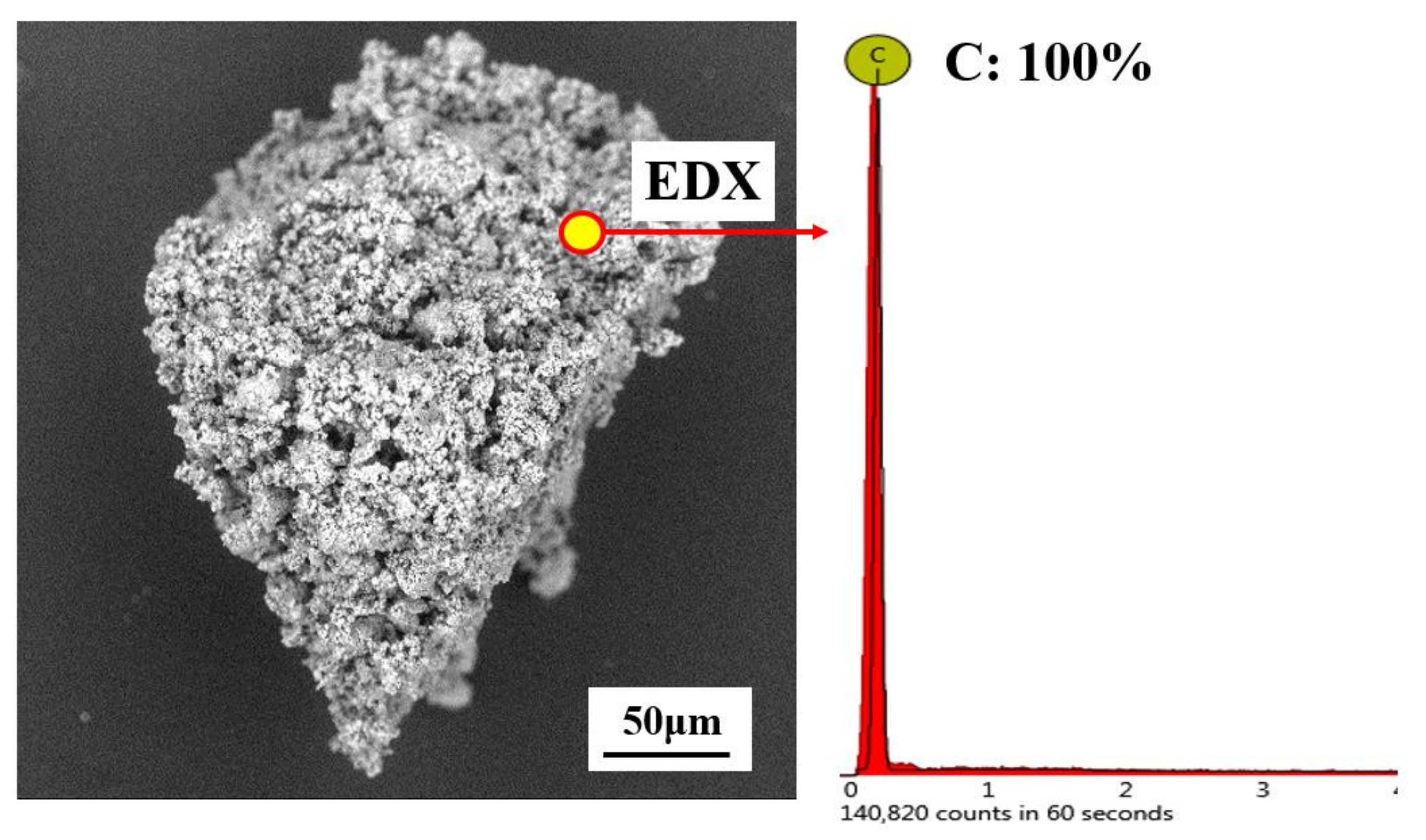
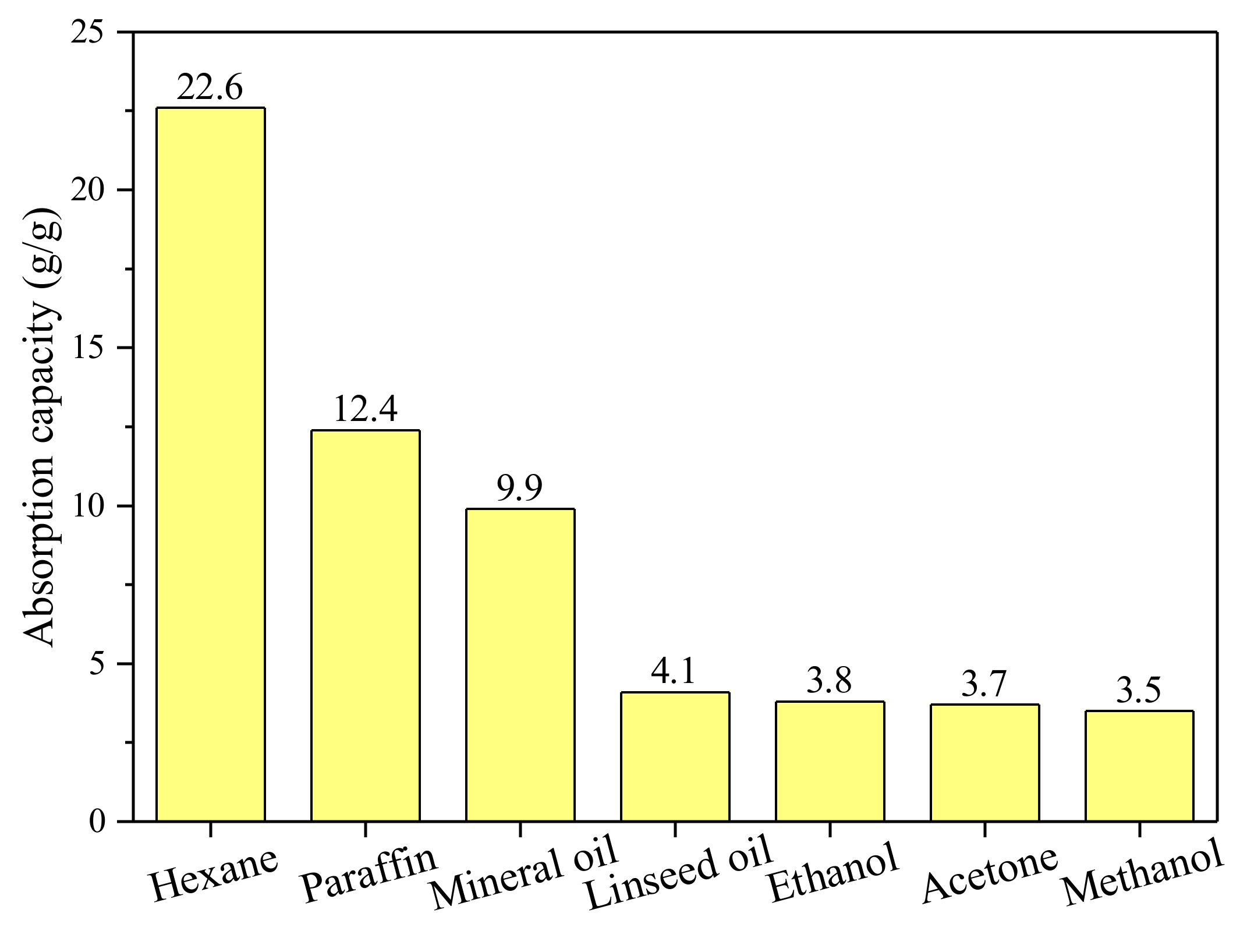

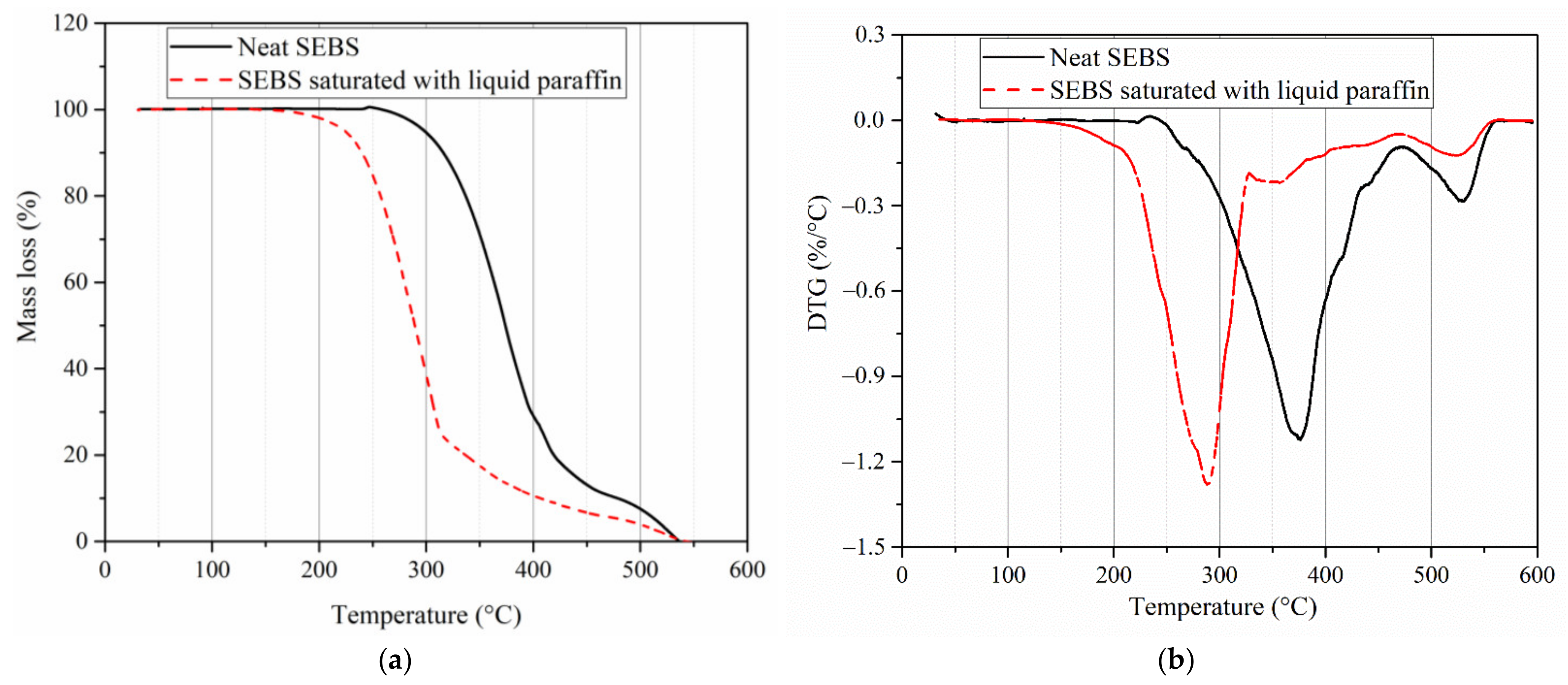


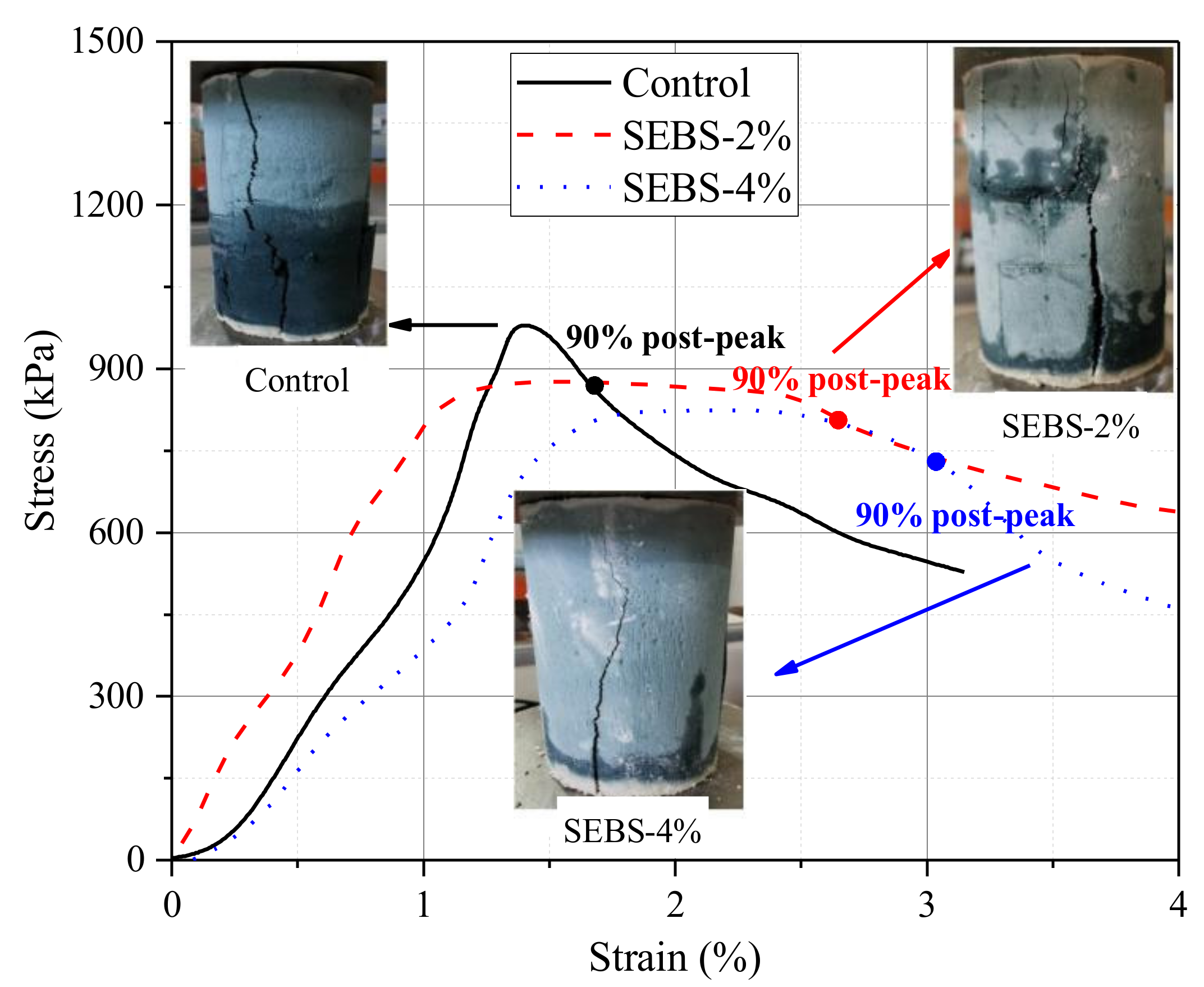
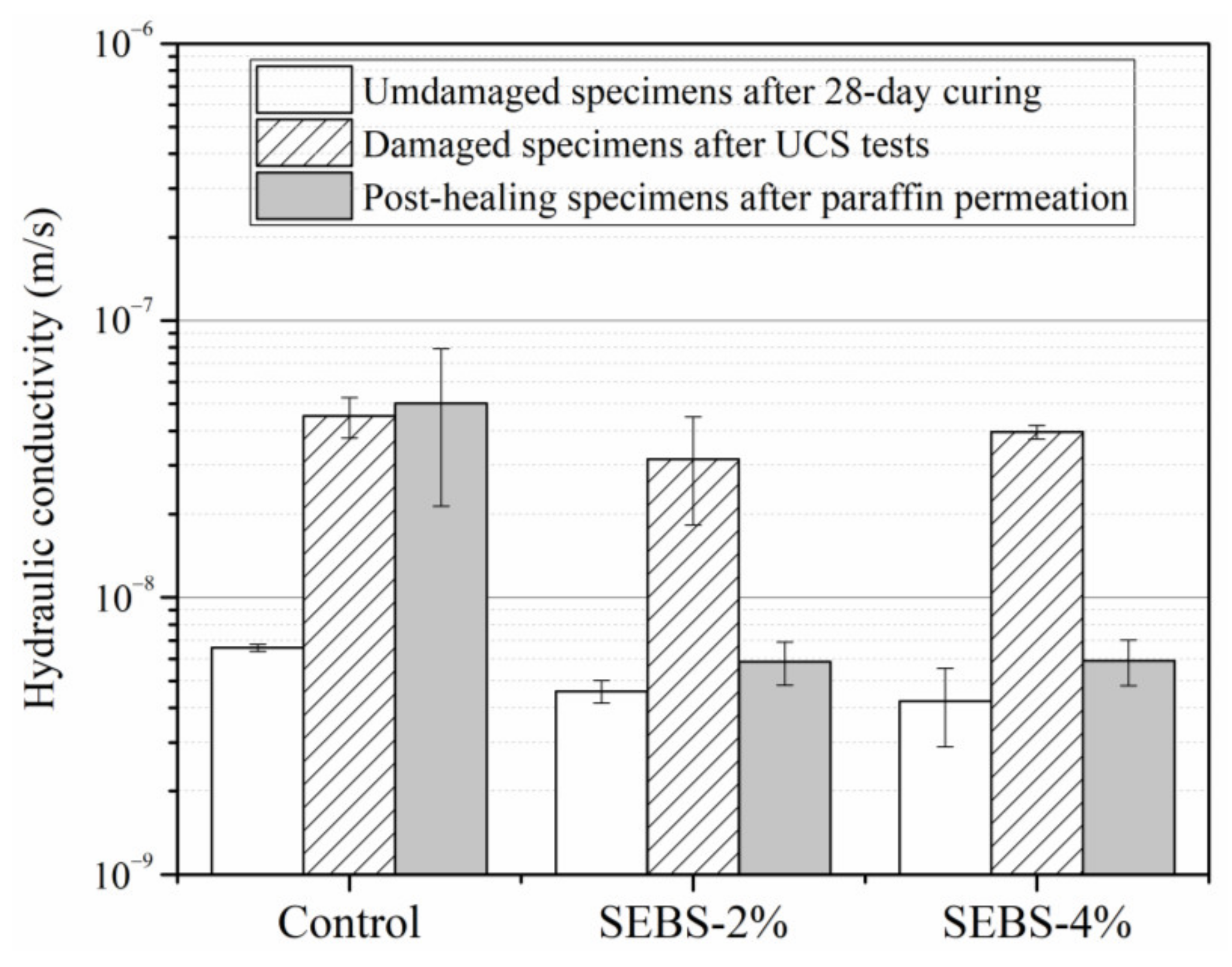

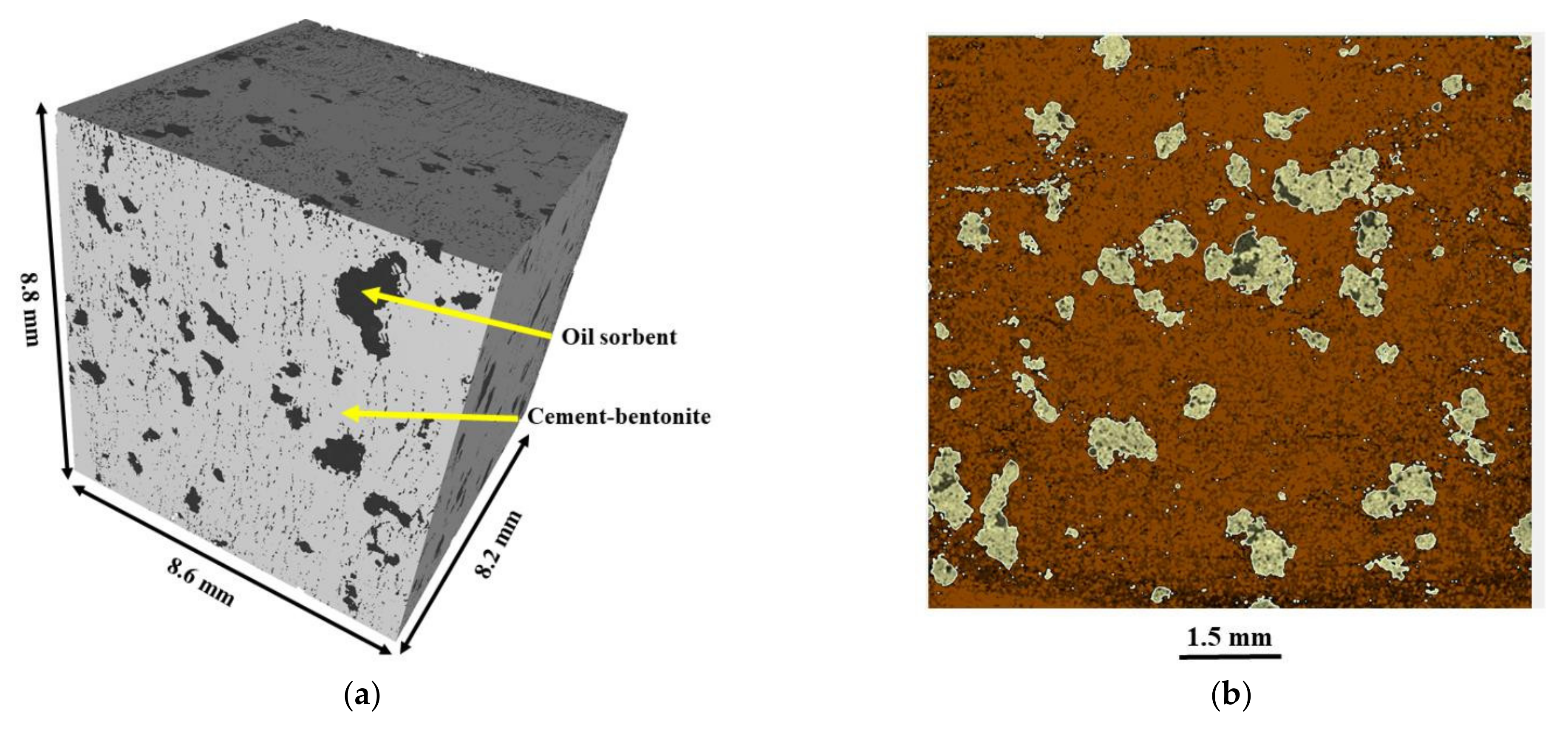
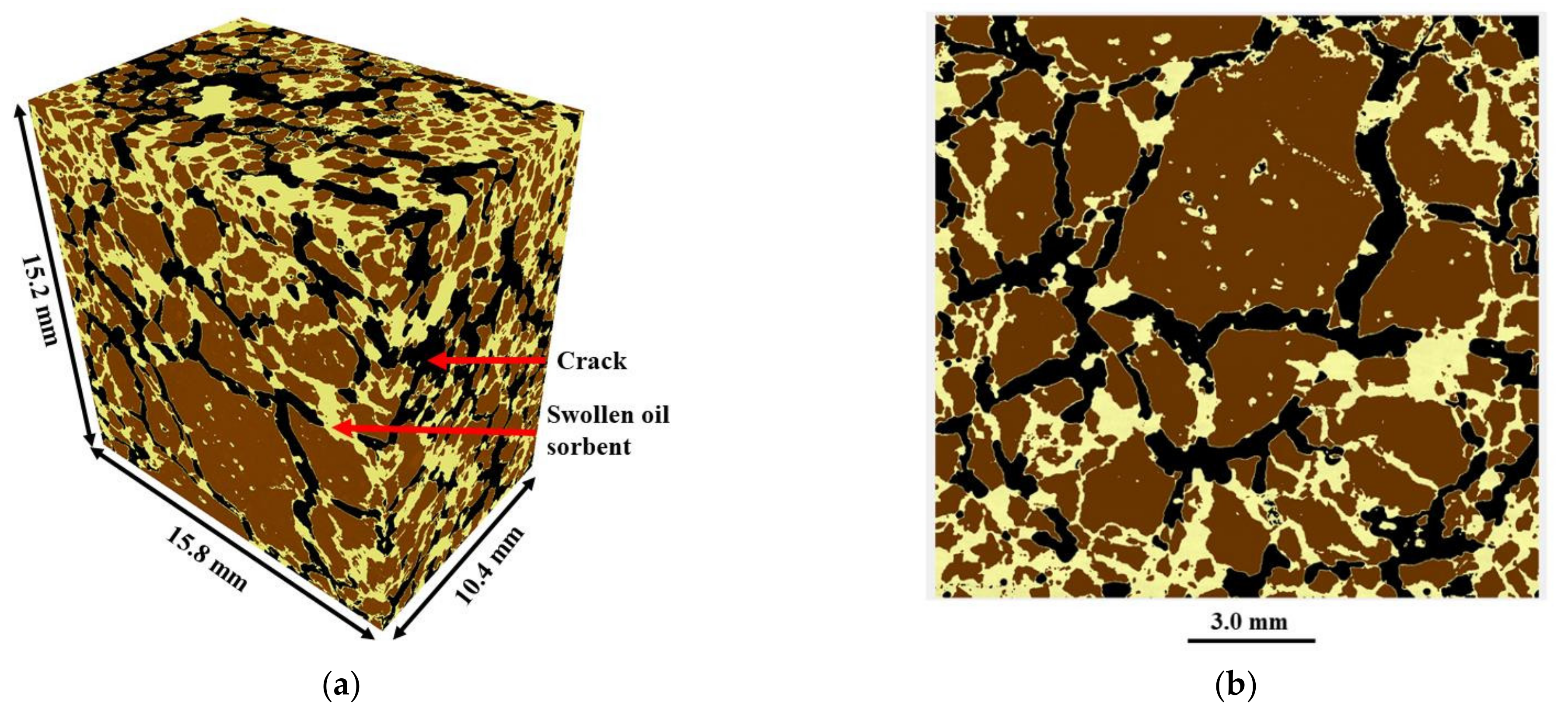

| CaO (%) | SiO2 (%) | Al2O3 (%) | MgO (%) | Fe2O3 (%) | |
|---|---|---|---|---|---|
| Cement | 65 | 20 | 5 | 1 | 2 |
| GGBS | 40 | 35 | 12 | 10 | 0.2 |
| Bentonite | 1.01 | 65.3 | 11.7 | 3.35 | 6.36 |
| Mix ID | Slag–Cement–Bentonite Slurry | SEBS (% by Total Slurry Weight) | |||
|---|---|---|---|---|---|
| Bentonite | Cement | GGBS | Water | ||
| Control | 5 | 4 | 16 | 75 | 0 |
| SEBS-2% | 5 | 4 | 16 | 75 | 2 |
| SEBS-4% | 5 | 4 | 16 | 75 | 4 |
Publisher’s Note: MDPI stays neutral with regard to jurisdictional claims in published maps and institutional affiliations. |
© 2022 by the authors. Licensee MDPI, Basel, Switzerland. This article is an open access article distributed under the terms and conditions of the Creative Commons Attribution (CC BY) license (https://creativecommons.org/licenses/by/4.0/).
Share and Cite
Cao, B.; Zhang, Y.; Al-Tabbaa, A. SEBS-Polymer-Modified Slag–Cement–Bentonite for Resilient Slurry Walls. Sustainability 2022, 14, 2093. https://doi.org/10.3390/su14042093
Cao B, Zhang Y, Al-Tabbaa A. SEBS-Polymer-Modified Slag–Cement–Bentonite for Resilient Slurry Walls. Sustainability. 2022; 14(4):2093. https://doi.org/10.3390/su14042093
Chicago/Turabian StyleCao, Benyi, Yunhui Zhang, and Abir Al-Tabbaa. 2022. "SEBS-Polymer-Modified Slag–Cement–Bentonite for Resilient Slurry Walls" Sustainability 14, no. 4: 2093. https://doi.org/10.3390/su14042093
APA StyleCao, B., Zhang, Y., & Al-Tabbaa, A. (2022). SEBS-Polymer-Modified Slag–Cement–Bentonite for Resilient Slurry Walls. Sustainability, 14(4), 2093. https://doi.org/10.3390/su14042093








